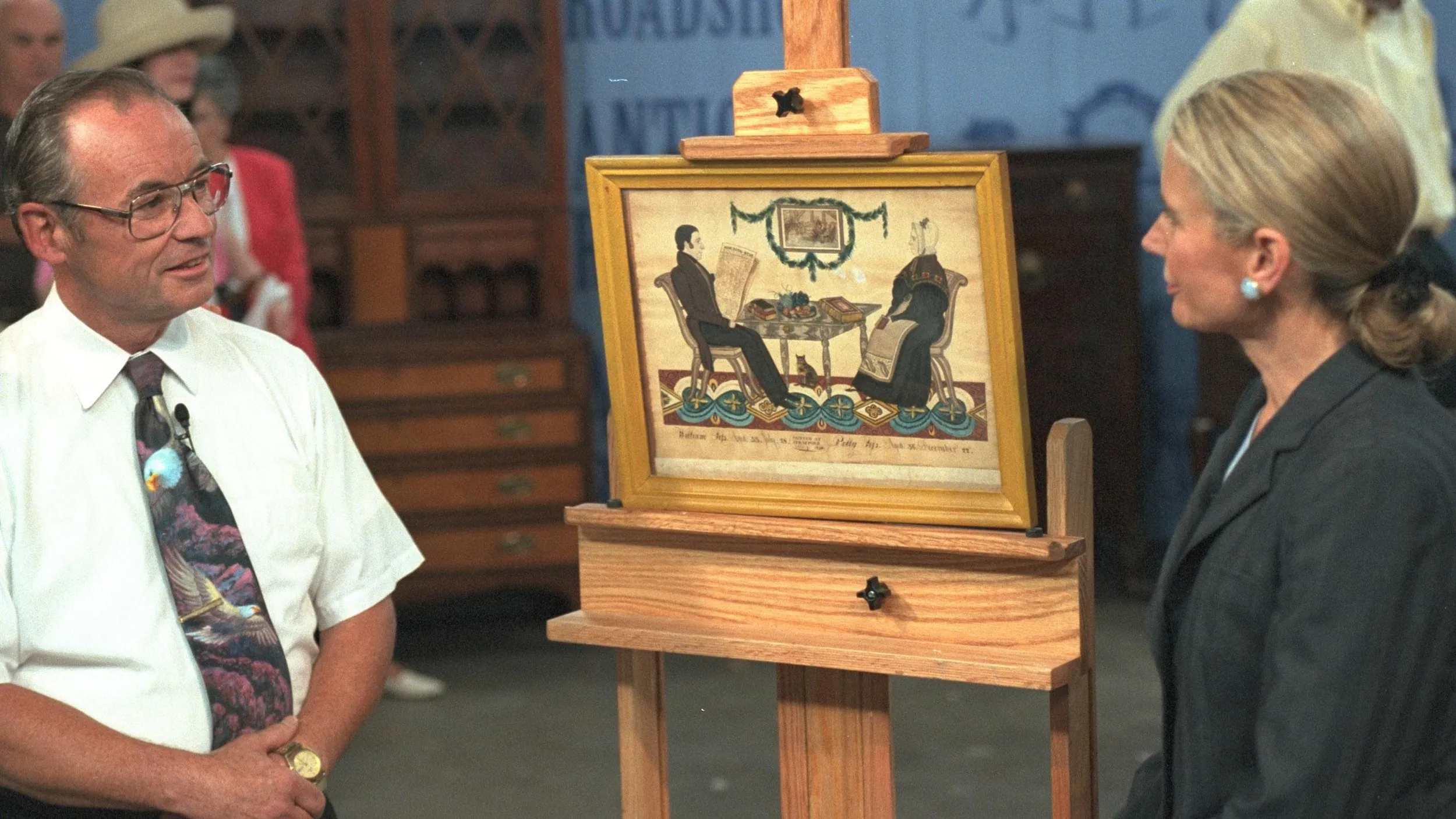GUEST: This belonged to my grandmother, who played the violin. She went to Europe with her family on the grand tour. It would probably be in the late 1800s. She was a young woman then. And one of the things they bought was this violin when they were in Italy.
APPRAISER: Well, it's interesting... part of the story-- she's purchased this or her family has purchased this instrument in Italy and then brought it back to the United States, where the next part of this story starts. And this is the attribution of this instrument. Back here in America, they then tried to find out where this violin was made and who it was made by. It's a saying I always sort of spurt out that "Put one violin in a room with two experts and you're going to get three opinions" because the violin has to speak for itself at some point.
GUEST: Right, right, right.
APPRAISER: We've got two very interesting ones here, one from 1942 by a Julius Guetter, who was a maker and restorer in Philadelphia, where your family was from. He put this instrument as a Joseph Guarneri as it's labeled. Yet a year later, it's shown to one of the better dealers in the United States, Rudolph Wurlitzer, who then ascribes it to Johannes Baptiste Ceruti-- a much later maker, after Guarneri. And now you'll hear my opinion, yet a third.
GUEST: Oh, great, I can't wait.
APPRAISER: The instrument is most certainly Italian work and for a lot of reasons. We're going to look at the workmanship here. One of the most wonderful things about this instrument is the scroll and how wonderfully it's carved. It's a very short, compact scroll very much in the style of Guarneri. And if I had to venture, I'd say it's from the maker of the Guarneri family. Yet the body tells us something different. Why is it Italian work? We're going to look first here at the f-holes and how wonderfully the wings are cut and finished off. When we look at the thicknesses of the f-hole, we're noticing that it starts off very even through in this area and then gets thick again up at the wings. That technique repeats itself on the back of the violin with the corners, both on the top and back. You'll notice a very even edgework around the outer bouts and as it approaches the corners it actually scoops out-- typical Italian style, without a doubt. The varnish doesn't say 18th century; the varnish-- this sort of thinly applied varnish-- says 19th century. I'm going to say 1810, 1820, in that period. Having an attribution of Ceruti with this instrument in this condition, I'd give it an estimate of between $18,000 and I'd probably say $26,000, somewhere in that range, at auction.
GUEST: Wow, wow, wow, wow, wonderful.
APPRAISER: It's a wonderful, classic piece. Always difficult to attribute pieces. You know, there's 10,000 names in this book, and we only know a small portion of all their work.
GUEST: And there's no signature or little carving...
APPRAISER: No, no, right. But a great example.
GUEST: Would you recommend getting it refinished or doing anything to get it playable, or...?
APPRAISER: Well, "refinishing" is a dangerous word. You want to keep this varnish as original as possible because it's really quite wonderful a varnish on here. Yes, certainly a little restoration work-- gluing the seams, getting it set up, certainly making it playable if there's someone in the family who wants to play it. I think it would serve a musician very well.
GUEST: What do you know?



